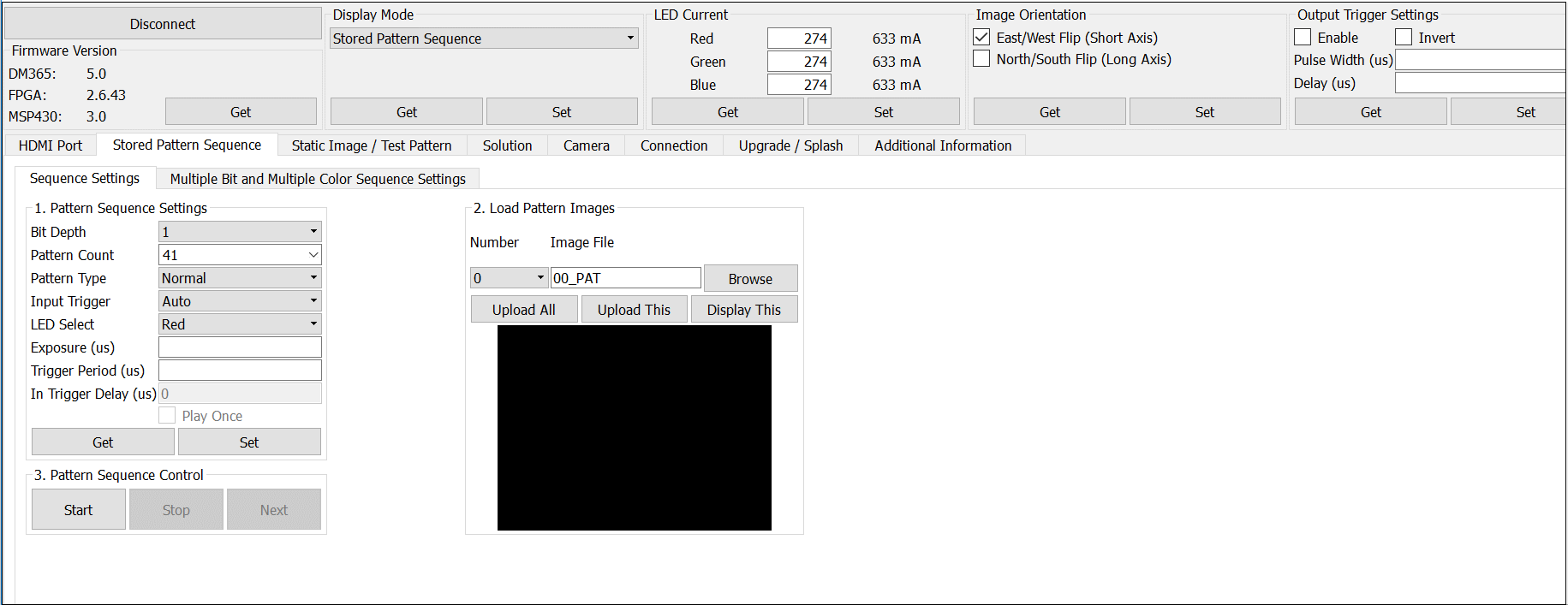Other Parts Discussed in Thread: DLP4500
Hello,
I have the LightCrafter EVM aka LightCrafter 3000.
I need help in writing a specific MBMC request as I'm not sure about the exact parameters of the request.
So here are the details:
I have 41 patterns to display in sequence.
The colors in the patterns are black and white only, and needs to be displayed in black and white -> Which is why all 3 RGB LEDs are needed? Is the bit depth still 1 bit in this case?
Exposure time would be 333 microseconds if possible, would it be also possible for the trigger period to also be 333 microseconds such that there is no trigger delay?
Thank you very much and looking forward to your advice.


